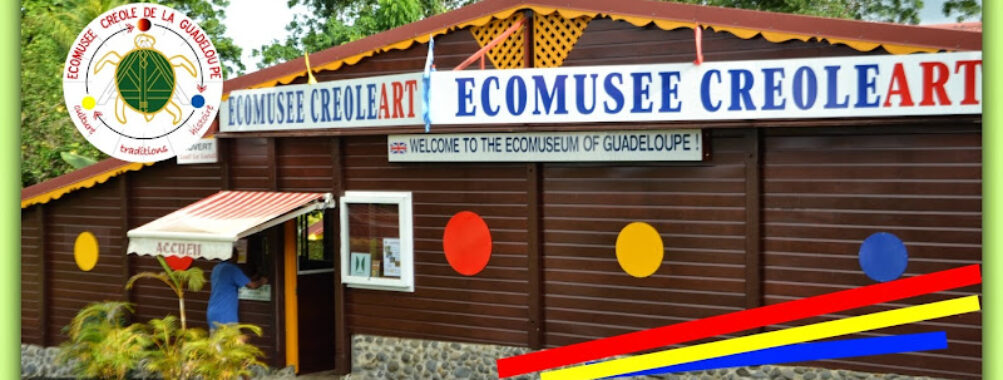
ECOMUSEE CREOLEART OF GUADELOUPE AND DREAMS OF VILLA
“`html
Table of Contents
Description
The Ecomusée CréoleArt of Guadeloupe and Dreams of Villa is one of those places that feels less like a polished tourist attraction and more like stepping into someone’s personal story. It began as a simple piece of land, overgrown and buzzing with mosquitoes, when its founder returned to Guadeloupe after years away in the army. With no job and just a vision, he started clearing the land, planting, and slowly shaping it into what would eventually become a living museum of Creole culture. By 1993, the first version of a Creole garden was open to the public, and in 2007 it officially took form as the ecomuseum that visitors can enjoy today.
What makes this place stand out isn’t just the plants or the artifacts on display—it’s the deeply personal connection to Guadeloupe’s history. The founder wanted to celebrate not only the island’s cultural roots and traditions but also his own childhood memories with his grandparents. That mix of personal nostalgia and cultural preservation gives the space a warmth that’s hard to replicate. You’re not just looking at objects behind glass; you’re walking through a story, with nature, recipes, myths, and customs woven into every corner.
Visitors often describe it as small but meaningful. Some people breeze through and feel it’s over quickly, while others linger, reading the panels, smelling the herbs, and chatting with the staff. It’s not a flashy attraction, but if you’re curious about how Guadeloupe’s people lived, healed, and cooked with the land, this museum offers a refreshing and authentic perspective. It’s the kind of place that rewards those who take their time.
Key Features
- A Creole garden filled with medicinal, edible, and aromatic plants, each with stories, recipes, or folklore attached.
- Exhibits that highlight the island’s traditions, history, and the blending of cultures that shaped modern Guadeloupe.
- A restaurant on-site where visitors can taste local dishes prepared with fresh, regional ingredients.
- Panels and displays that make nature part of the cultural experience, showing how plants were used for healing and daily life.
- Wheelchair-accessible entrance and restrooms, making it inclusive for all travelers.
- A family-friendly environment where kids can explore and learn in a hands-on way.
- LGBTQ+ friendly and considered a safe space for transgender visitors, reflecting a welcoming atmosphere.
Best Time to Visit
The museum is open year-round, but your experience can vary depending on the season. The cooler, drier months from December to April are generally the most comfortable for walking through the gardens without worrying about sudden showers. That said, visiting during the wetter months has its own charm—the plants are especially lush, and the scent of the herbs and flowers is stronger after rainfall. If you’re someone who doesn’t mind a little humidity and the occasional mosquito, you might actually prefer the quieter, off-season visits when fewer tourists are around.
Morning visits tend to be the most pleasant, as the air is cooler and the light makes the gardens particularly photogenic. Plus, you’ll have more energy to take in the details before the midday heat sets in.
How to Get There
Reaching the Ecomusée CréoleArt requires a bit of planning. It’s located in Sainte-Rose, which is on the northern part of Basse-Terre island. Travelers usually arrive by car, and honestly, that’s the easiest way. Public transportation options are limited and not very reliable for this kind of excursion. If you’re already renting a car to explore Guadeloupe, it’s a straightforward drive with signs pointing the way once you get closer to the area.
For those who prefer not to drive, a taxi or private transfer can be arranged, though it’s worth noting that costs can add up quickly. Some visitors combine a trip here with a visit to the nearby Sofaia hot springs, making for a full day of culture and relaxation.
Tips for Visiting
A few practical tips can make your visit smoother and more enjoyable. First, wear comfortable shoes. The paths aren’t difficult, but you’ll be walking outdoors, and sandals sometimes aren’t the best choice. Bring insect repellent too—remember, this place started as a mosquito haven, and although it’s been tamed, the little critters are still around.
It’s also a good idea to bring cash. While some places in Guadeloupe accept cards, smaller attractions like this often prefer or require cash payments for entry or food. Don’t rush through the exhibits. Take your time to read the panels, smell the herbs, and maybe even chat with the staff if they’re available—they often have extra stories that aren’t written down.
If you’re traveling with children, this is a great spot to let them explore. The sensory experience of touching leaves, smelling spices, and hearing stories makes it engaging for younger visitors. And if you’re someone who loves photography, you’ll find plenty of opportunities here, from the details of the plants to the rustic charm of the buildings.
One last thought: go in with the right expectations. This isn’t a massive museum with endless halls or high-tech displays. It’s intimate, personal, and imperfect in the best way—like visiting a friend’s garden that just happens to double as a cultural archive. If you approach it with curiosity and patience, you’ll walk away with a deeper appreciation of Guadeloupe’s roots.
“`
Location
Places to Stay Near ECOMUSEE CREOLEART OF GUADELOUPE AND DREAMS OF VILLA
Find and Book a Tour
Explore More Travel Guides
No reviews found! Be the first to review!